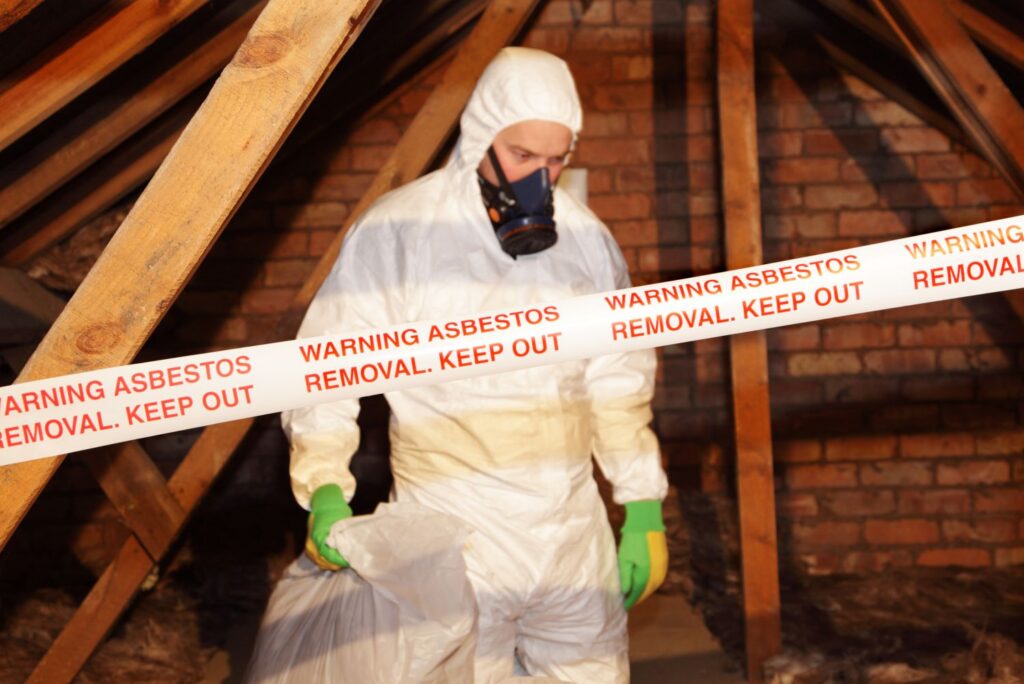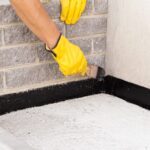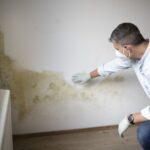
Uncover the Dangers of Asbestos Exposure: Everything You Need to Know
Asbestos is a dangerous material that can cause serious health problems for those exposed to it. When asbestos fibres become airborne, they can be inhaled or ingested, leading to long-term problems. Asbestos exposure often occurs when the material breaks down or is disturbed during repairs and renovations. It’s also possible to get exposed to asbestos in the home, though it’s less common.
This article will explore asbestos, its dangers, how it looks, and where it is present in your house. So, wait no further, and let’s move on!
What Is Asbestos?
Asbestos is a naturally occurring silicate mineral made up of fibrous crystals. These fibres are composed of minuscule “fibrils” that can be released into the air through abrasion or other activities. There are six kinds in total, each presenting its own unique characteristics and risks to health.
Six distinctive fibrous minerals- Chrysotile, Crocidolite, Amosite, Anthophyllite, Tremolite, and Actinolite – collectively form hazardous asbestos. Of these six elements in Asbestos, Chrysotile and Amosite are most often found.
What Makes Asbestos so Dangerous?
Asbestos is hazardous due to its microscopic fibres, which remain airborne for an extended amount of time. These minuscule particles can easily be inhaled, travelling deep into the lungs and potentially lodging in lung tissue – posing a serious health risk.
Ensnared in the lung tissue, these fibres can trigger a plethora of serious medical complications, such as pneumoconiosis (a scarring of the lungs), mesothelioma (cancer affecting the lining of the chest cavity), and even fatal cases like lung cancer.
Where Could Asbestos Lurk in Your Home?
Asbestos can be found in various products within your home, including insulation, ceiling, floor tiles, pipe coverings, wallboard, and roofing/siding shingles composed of asbestos cement.
Homeowners should be aware that artificial ashes and embers used in gas-fired fireplaces, some stove-top pads, walls and floors around wood-burning stoves, as well as vinyl floor tiles and the backing on vinyl sheet flooring/adhesives can all contain asbestos.
If you have an older home, beware of the risk of asbestos exposure. Asbestos can be found in hot water/steam pipes that may be coated with hazardous material or wrapped with blanket insulation and tape.
In addition, oil and coal furnaces, along with door gaskets, could also contain toxic insulation, which poses a deadly hazard if left undetected.
Any material made prior to 1980 could contain asbestos, and take proper precautions before disturbing anything that you suspect may contain this hazardous material.
How Can You Identify Asbestos?
Three asbestos varieties, crocidolite (blue), amosite (brown), and chrysotile (white), are known to man. Therefore, it should be quite simple to differentiate between the two more visible options: blue and brown asbestos. Fortunately for us, that makes them easier to identify!
Unfortunately, asbestos fibres are not that easy to detect. They are nearly invisible – so micro-sized and light-weight that they remain suspended in the air for days but can’t be seen with bare eyes. Only by looking through a microscope will you be able to recognize these hazardous particles.
The only way to confirm if a material contains asbestos is to have it tested. However, some clues could point to the presence of asbestos in your home, such as age and type of material.
What Dangers Does Asbestos Pose for Our Health?
Despite being present in the atmosphere, microscopic asbestos fibres only become hazardous when inhaled. Fortunately, most individuals experience no adverse health effects from such low-level exposure.
Nonetheless, it is imperative to take precautions if you are likely to come into contact with higher concentrations of these hazardous particles.
Mechanism of Action of Asbestos
When asbestos fibres are inhaled, they become trapped in the lungs’ mucous layers. From there, they can cause a variety of health issues by irritating and inflaming lung tissue. Asbestos particles also have an affinity for binding with specific proteins found in some types of lung cells, which can lead to further inflammation and damage to the cells.
The long-term effects of asbestos exposure depend on the amount, type, and duration of exposure. People who are regularly exposed to high levels of asbestos fibres over a long period of time have an increased risk of developing serious illnesses such as
- Mesothelioma
- Lung cancer
- Asbestosis
It is important to note that not everyone who is exposed to asbestos will develop any of these illnesses. However, even a small amount of exposure can increase the risk of health complications.
Mesothelioma
Mesothelioma is a type of cancer that arises in the lining surrounding several organs within your body. This disease has been associated with risk from exposure to asbestos fibres.
Mesothelioma has a predilection for attacking the protective lining around the lungs (pleural mesothelioma). However, it can also develop in other areas of your body, such as the abdomen (peritoneal mesothelioma), heart, or testicles.
If you experience mesothelioma in your lungs, you may observe the following symptoms: chest pain, difficulty breathing, extreme fatigue and tiredness, a fever with heavy sweating during the night hours; an ongoing cough that won’t go away; lack of appetite or sudden loss of weight; as well as swollen fingertips.
Lung Cancer
Lung cancer develops in the cells that line the air passages and is the leading cause of death from occupational hazards. Asbestos fibres can accumulate in those cells, resulting in inflammation or scarring that can predispose you to develop this fatal condition.
Watch out for the following symptoms when it comes to lung cancer: Persistent or worsening cough, chest pain, diminished breath capacity, wheezing, coughing up blood, extreme fatigue, and unexplained weight loss.
Asbestosis
Prolonged exposure to extremely high quantities of asbestos fibres in the air can result in a serious, lifelong lung condition known as asbestosis. Although it is most commonly an occupational illness, there have been instances of secondary contamination from airborne asbestos dust particles.
Asbestosis may present with the following signs and symptoms: Coughing, chest tightness and pain, shortness of breath, fever and night sweats, clubbed fingers, and an increased risk of developing other lung diseases.
How to Handle Asbestos in Your Home Safely?
When it comes to removing asbestos from your home, safety is of the utmost importance. Asbestos can be dangerous and must be handled carefully to minimize the risk of exposure. Depending on the type and location of the asbestos, it may be possible to remove it safely without professional help. However, in some cases, it is best to seek the advice of a qualified professional.
If you suspect asbestos in your home, it’s important to take the proper steps to identify and address the problem. Here are some tips for safely handling asbestos in your home:
- Have a professional assess the area to identify if there is asbestos present.
- If asbestos is identified, have the material removed by a professional who has experience in handling hazardous materials and understands the health risks associated with asbestos exposure.
- Follow safety protocols when removing any asbestos-containing materials to ensure that no one is exposed to dangerous levels of dust or fibres.
- Wear appropriate protective clothing such as a face mask, protective gloves, and coveralls when working with asbestos-containing materials.
- Dispose of all asbestos-containing materials in a safe manner according to local regulations. Be sure to properly seal the material before disposing of it.
- Regularly test the air quality in your home to ensure that no traces of asbestos remain after removal.
- Have your home regularly inspected for any new asbestos-containing materials.
Educate yourself and your family on the potential health risks associated with asbestos exposure. This can help you stay alert to any changes in air quality or suspicious materials that may contain asbestos.
By following these steps, you can ensure that your home is free from asbestos and that everyone living there is safe from its potential health risks.
Pillar Restoration: The Perfect Choice for Asbestos Abatement
Searching for an experienced, qualified team to handle your asbestos removal and remediation requirements? Pillar Restoration is a perfect choice!
Our experts have extensive experience in dealing with any level of contamination, providing detailed plans to guarantee safe and efficient job completion. And our top-notch equipment ensures that all hazardous materials are removed without further damage or danger.
Don’t wait – contact us today!
Need a Restoration Contractor?




